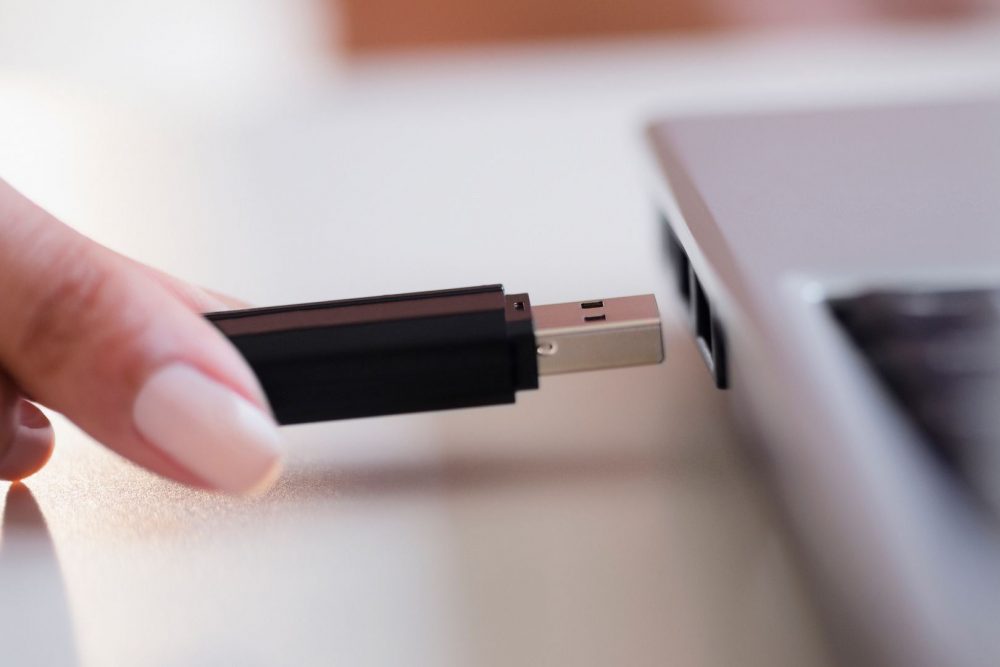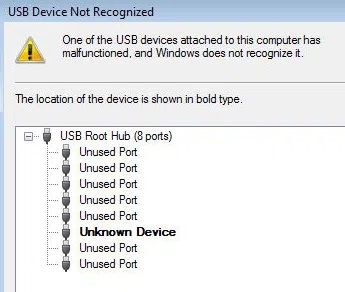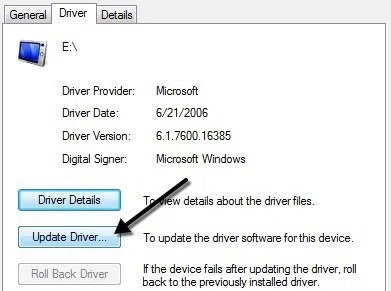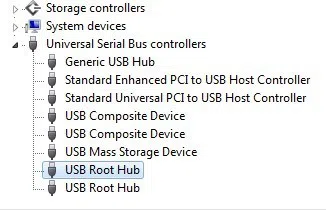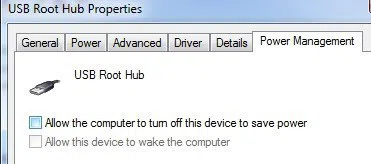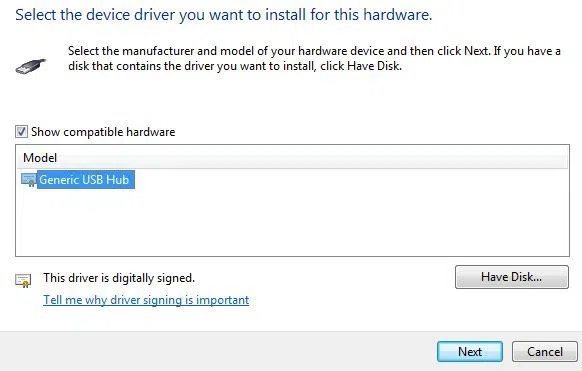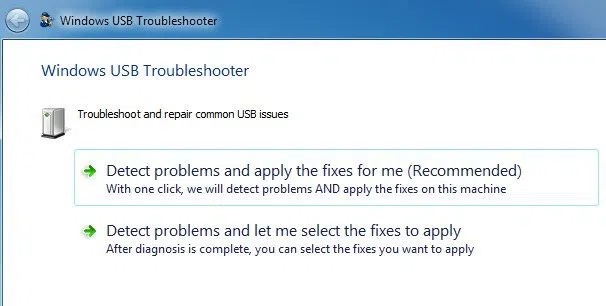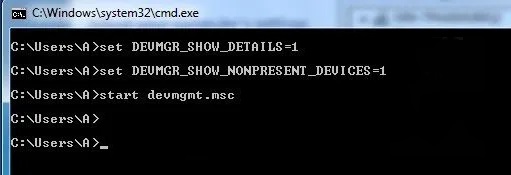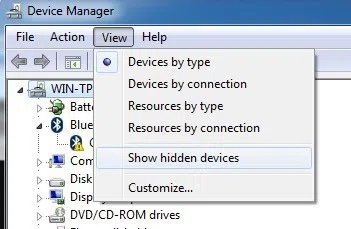When you plug in a USB mouse, keyboard, camera, or other devices, are you getting “USB device not recognized” errors? I’ve got five ports on my computer, and I can’t live without USB ports so that I can put my mouse, keyboard, camera, phone and printer all at once!
You probably have a USB hub connected to one of your USB ports, so you can still link more devices for those of you with even more USB gadgets. It works great most of the time, but sometimes your computer can stop recognizing USB devices. The odd thing about this error is that the ports work only smoothly because I could still load my cell phone easily, but my camera could not be recognized using the same port.
Only one solution worked for me after spending a lot of time and trying several different ways of solving the issue. So first, I will mention this solution, but also the other possible solutions, as the first solution might not solve everyone’s problem.
Method 1: Unplug Computer
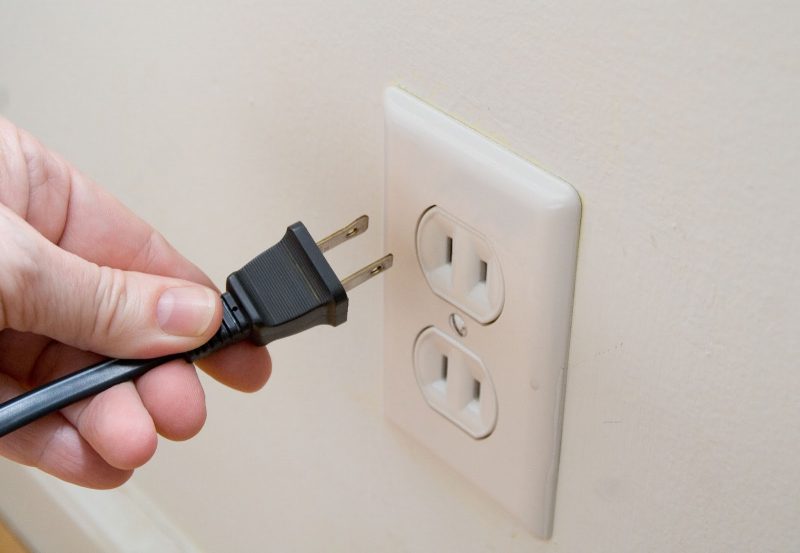
So how did I fix the problem at last? Well, it’s a very simple solution if you’re lucky! Try it first, and you have saved a lot of time if it works.
Just unplug the power supply on your computer. That’s it, yes! Yes! Note that this does not only mean that the power button will turn off your computer because most modern computers don’t turn off, and the motherboard still gets power. Also, sometimes it is useful to wake up a computer remotely, etc.
All computer hardware, including USB ports, is connected to the motherboard. The motherboard must sometimes be ‘restart’ because things can go wrong, i.e., suddenly, all or certain USB ports stop working. The small motherboard microprocessor reloads drivers, and hopefully, your USB port recognizes devices again.
Through the shutdown function in Windows or the power button, you can turn off your computer and then UNPLUG the PC from the wall exit. Then, let it sit down for a few minutes and plug it in.
Method 2: Restart & Disconnect USB Devices
You can next try to disconnect all USB devices and restart the machine afterward. Then, finally, try connecting the USB device that caused the problem once you’ve restarted it.
If you don’t recognize that particular USB port, try another one. The hardware issue could arise with one of the USB ports if the device is recognized by another USB port. If no USB port recognizes the device, continue reading because it may be otherwise.
Method 3: Update Device Driver
If Windows can’t recognize the device, the device can also appear as “Unknown Device” in the Device Manager. Click Start and tap in devmgmt.msc or go to Control Panel and click Device Manager for Device Manager.
In that instance, click Unknown Device right-click, click Properties, then the Driver tab, and click Update Driver.
You can also try downloading your driver from the website of the manufacturer if it isn’t working. It is probably not a driver problem if the USB device is just a flash drive. However, you may want to download the driver for a particular device if you are installing a USB printer, drawing pad, etc…
Method 4: Connect Directly to PC
Well, A friend of mine ran into the problem, and the cause was his USB hub. Unfortunately, there were only three USB ports on his computer, so he purchased a hub where an additional 8 USB devices could be connected.
I think that proved too much for your computer, and it just sporadically started not to recognize different devices. It worked fine after the hub had been removed and the device connected directly to the computer.
We could not find a solution other than to reduce the number of items connected to the hub. Another solution worked, but it meant a new USB hub with more power was purchased.
You could be lucky if you have this issue with Windows 8 or Windows 8.1. Microsoft released a Windows 8 fix that did not properly detect USB devices. Ensure this hotfix is installed if Windows 8 is running.
Method 5: USB Root Hub
You can also try opening the Device Manager, expanding USB Serial Bus Controller by clicking right on the USB Root Hub and then clicking Properties.
To save power, click the Power Managing tab and check to Allow the computer to disable this device. You must repeat each step if you have more than one USB Root Hub.
To restart your computer:
- Click the OK button.
- Try connecting your USB device again and see whether it is recognized.
- If not, return to each Power Administration tab and check the box again. If the device is recognized, leave it uncontrolled.
Method 6: Update Generic USB Hub
You can also try another thing if you get the Unknown Device error in Device Manager. The device manager opens, and Universal Serial Bus Controllers are expanded.
At least one item called the Generic USB Hub should be displayed. You may see two, three or more computers on some computers. Right-click the first and select the software to update your driver.
Choose Browse my PC for driver software when the update dialogue pops up.
Click then Let me select from my computer’s list of drivers below.
Choose Generic USB Hub from the list. Normally, nothing other than this choice will be listed. After you have finished installing, click Next and click on Close.
The device manager screen should be updated at this point, and either the unknown device remains there or is recognized now. You can repeat the process for each Generic USB hub listed if it still displays as not recognized.
Method 7: USB Troubleshooter
You could download the Windows USB Troubleshooter Fixit tool if nothing has worked up to now. The Windows XP, Vista and 7 free tool works.
You can either fix your problems with the troubleshooter or choose the corrections yourself. I’d just let them work for you because sometimes, the choices for the novice user can be confusing and technical.
Method 8: Uninstall Hidden Devices
Device Manager does not display all devices installed on the system by default. It shows only those connected at the moment. However, if you have installed and no longer use a USB printer before, it is still installed and will not appear in the Device Manager.
Some hidden USB devices, or ghost ones, may cause conflict with actual USB devices. In Device Manager, you can view hidden devices first by opening a command prompt and then type the following two commands:
set DEVMGR_SHOW_DETAILS=1
set DEVMGR_SHOW_NONPRESENT_DEVICES=1
start devmgmt.msc
You will have the need to click View and click Show Hidden Devices once the device manager loads.
Now you want to expand the screen, serial controls, and unknown devices. If you see anything in the list that is grey or says that unknown device, click and select Uninstall. Hopefully, it will be possible to remove older devices to work properly with new devices.
Method 9: Uninstall USB Devices
You can also lastly try uninstalling and restarting all USB devices on your system. I mentioned the last because although Windows will automatically recognize the USB controllers, hubs, and devices, it can fail sometimes, and you won’t have any USB ports.
I had a 6 USB ports computer, and it wouldn’t work properly with just one port. In Device Manager, I uninstalled and restarted everything under USB Serial Bus Controllers. I didn’t have a USB port to work instead of re-detecting everything, so be careful when using this procedure.
Start deactivating every item from the serial USB Bus Controller to the Device Manager. Uninstall items with exclamation points or listed as Unknown Device before you begin with anything already working.
Other Possible Solutions To Fix USB Device Not Recognized
If nothing has worked to date, it’s pretty safe to say that the actual hardware may have a problem. The best thing to do is connect the device to another computer and check whether or not it works. If not, the device is a problem.
Solution – 1
If you have one lying around you, the other possible solutions are to try another USB cable. After that, you just have to buy a new cheap USB cable: A to B, A to Micro B, A to Mini B, or A to A. This is a quite rare issue, but I have observed that it has been technical support several times over my many years.
Solution – 2
The other possible solution consists in taking the device, connecting it to another machine, and, if the device is recognized correctly, then ejecting it from the computer properly before reconnecting to the original computer. I have seen the problem with multiple unplugged flash drives without properly ejecting. They suddenly became apparent on the original computer after connecting them to another computer and recognizing them properly from there.
Solution – 3
Some people had the luck of updating the BIOS to eliminate this problem. Whether or not it’s a good idea to update BIOS, I wrote an article already, but it might be worth trying in this case. You can enter the BIOS and disable the USB, restart your computer, and re-activate the USB. You just have a PS2 port on your computer to ensure that, unless you connect via USB, you will be unable to do anything when you disable USB in the BIOS.
Also, Check :
- Screen Mirroring Software for Windows 10
- Install And Run Windows 10 From A USB Drive
- USB Data Recovery Software Free for Windows 10
Hopefully, you will fix your USB Device Not Recognized problem, one of the many solutions above. If not, post a comment, and I’m going to try and assist. Enjoy!
